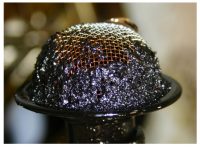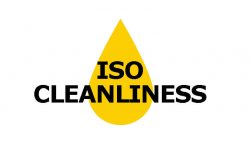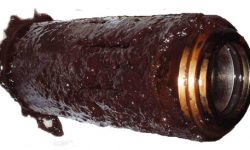Causes of High Oxidation
While some new oils may produce an oxidation value due to the presence of synthetic esters, increases in oxidation generally represent degradation of the fluid. The biggest driver to oxidation is heat, as the rate of reaction doubles with every 10 °C or 18 °F increase in temperature. This type of degradation may increase viscosity, acidity, and sludge/varnish formation in lubricants.
Prolonged or elevated oxidation may lead to deposits; these deposits tend to be very dark (near black) in color and have a granular texture. In situations with extremely high temperatures, even localized hot spots, both oxidation and nitration will increase.
For specific information on other measured parameters, bookmark this page for future updates. Coming up next: Nitration by FTIR.






